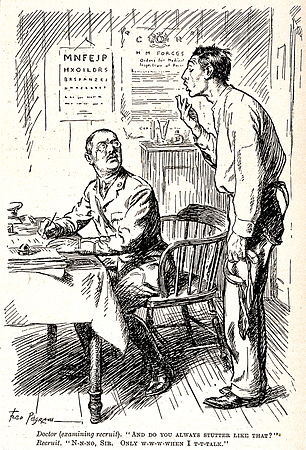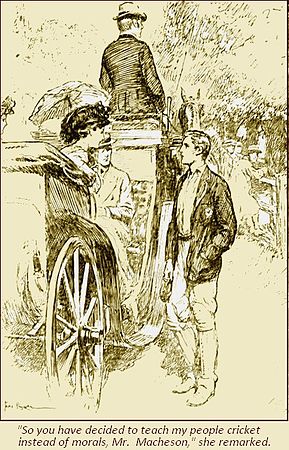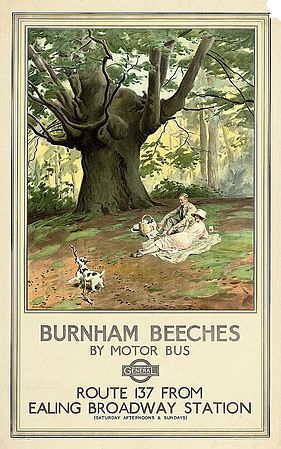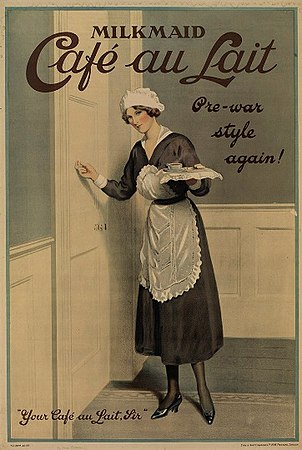Fred Pegram

by Howard Coster
Frederick Pegram (19 December 1870 Somers Town, London - 23 August 1937), was a prolific English illustrator and cartoonist who produced work for The Pall Mall Gazette, Punch Magazine, The Idler, Illustrated London News, The Tatler, and The Daily Chronicle. He studied under Fred Brown and spent some time in Paris. He also painted, drew pencil portraits, did watercolours, used chalk and pastel, and produced etchings. He became one of the most consistent of magazine illustrators, maintaining a high standard and preferring a Georgian setting for his works. He succumbed to lung cancer on 23 August 1937.

The son of Alfred Pegram, a cabinet maker, Frederick, enrolled at the Westminster School of Art at age 15. Some of his fellow students were Henry Tonks, Aubrey Beardsley and Maurice Greiffenhagen. Pegram served as Special Constable at Buckingham Palace during World War I. Pegram's draughtsmanship was widely acclaimed and he produced the artwork for Mackintosh's Toffee advertisements, Player's, Ronuk Wax Polish, Selfridges, and some versions of the iconic Kodak Girl. Between 1889 and 1904 he exhibited regularly at the Royal Academy, and in 1925 was elected a member of the Royal Institute of Painters in Watercolours, where he was a frequent exhibitors.[note 1] He also designed posters for the Underground Group. In 1918 he moved into one of 15 artist's studios that were known as 'The Avenue' and located at 76 Fulham Road. [2]
"One of the most enjoyable experiences I have had was under the hospitable roof of Mr. Hall Caine, when I went to make the sketches for 'The Manxman' illustrations, which appeared in 'The Queen', in which paper the novel was first published. The popular novelist is a host par excellence, and I had a very good time."
— Fred Pegram
The sculptor and medallist Alfred Bertram Pegram[3] (17 January 1873 – 14 January 1941)[4][5] was one of Frederick's younger brothers. Frederick and Alfred were cousins to the four Brock brothers, all illustrators, who worked together in their studio in Cambridge.[6] Frederick, Alfred, and the Brock brothers were all first cousins to the sculptor Henry Alfred Pegram RA (27 July 1862 – 25 March 1937).
Books illustrated[edit]
Poor Jack (1897), At the Rising of the Moon (1898), London's World Fair (1898), The Orange Girl (1899) and Martin Chuzzlewit (1900), A Lost Leader. Marriage à la Mode, The Missioner, Tea-Table Talk; Sybil, Or The Two Nations (1895).
Notes[edit]
- ^ Pegram exhibited as follows: one work at the Chenil and New Chenil Galleries, eight works at the Connell & Sons Gallery, 14 works at the Glasgow Institute of the Fine Arts, one work at the International Society of Sculptors, Painters and Gravers, four works at the Walker Art Gallery, Liverpool, four works at the Royal Society of Portrait Painters, eight works at the Royal Academy, and 45 works at the Royal Institute of Painters in Water Colours.[1]
References[edit]
- ^ Johnson, J.; Greutzner, A. (8 June 1905). The Dictionary of British Artists 1880-1940. Woodbridge: Antique Collectors' Club. p. 397.
- ^ "John Singer Sargent's Fulham Road Studio".
- ^ "Alfred Bertram Pegram". Mapping the Practice and Profession of Sculpture in Britain and Ireland 1851-1951. Retrieved 13 July 2020 – via University of Glasgow History of Art and HATII.
- ^ National Archives (29 September 1939). 1939 Register: Reference: RG 101/238A E.D. AKBI. Kew: National Archives.
- ^ "Wills and Probates 1858 and 1996: Surname Pegram and the year of death 1941". Find a Will Service. Retrieved 13 July 2020.
- ^ Kirkpatrick, Robert J. (11 July 1905). "The Brocks: C. E. Brock, H. M. Brock, R. H. Brock". The Men Who Drew For Boys (And Girls): 101 Forgotten Illustrators of Children's Books: 1844-1970. London: Robert J. Kirkpatrick. p. 43.





